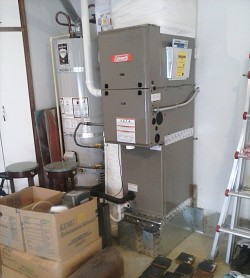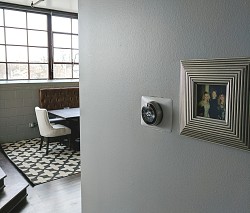Pros and Cons of Common Heating Systems
 When you are choosing a new heating system for your home, consider the cost and energy efficiency of the system, as well as the price and availability of energy sources like natural gas, electricity, and wood pellets. Here are the pros and cons of five of the most common options.
When you are choosing a new heating system for your home, consider the cost and energy efficiency of the system, as well as the price and availability of energy sources like natural gas, electricity, and wood pellets. Here are the pros and cons of five of the most common options.
1. Air Ducts and Vents (Forced-Air Systems)
Furnaces -- fueled by natural gas, oil, or electricity -- heat air and blow it through a system of ducts. The heat enters individual rooms through vents.
PROS: Forced-air systems are relatively inexpensive to install, repair and replace, and they heat quickly and evenly.
CONS: Many are not energy-efficient. Some users also complain that moving air is noisy and blows allergens around the house.
2. Steam or Hot-Water Radiators
Boilers generate steam heat or distribute hot water for heating. Steam is a relatively old and inefficient heating technology. Today, hot-water radiators -- in both baseboards and vertical units -- are more efficient and popular.
PROS: Radiators are quiet and energy-efficient, particularly when used with separate temperature controls for different areas of the home.
CONS: Hot-water radiators slowly and unevenly distribute heat from the edges of the room. They also pose challenges for furniture placement because baseboard vents should not be blocked.
3. Radiant Heat
Radiant-heat flooring is perhaps the most efficient and comfortable way to use the heat from a boiler. Hot water flows through pipes installed either directly into the floor or below the flooring. Instead of vents blowing heated air into the room, the floors gain heat which rises and warms the people and objects in the room.
PROS: Radiant-heat flooring is versatile, and can easily be used with solar hot-water systems and geothermal heating systems, among other options.
CONS: Installation and heating repair services for this type of system is expensive and it may not be applicable in all homes, depending on the foundation and flooring. Air-heated and electric radiant floors are also available, but both are cost-prohibitive for most home applications.
4. Wood Stoves
Wood-burning stoves are old devices getting a green upgrade.
PROS: A new generation of stoves can heat a room or even a small home by efficiently burning biomass such as compacted sawdust or agricultural waste. Specially formulated wood pellets burn with minimal waste or pollution, and they can even be used in boilers or furnaces to update an existing heating system.
CONS: The pellets must be delivered and fed into the stove or furnace, so these systems require more effort than most heating systems. Malfunctioning wood stoves can emit carbon monoxide or other dangerous air pollutants.
5. Electric Heating
Electric baseboards and other resistance heaters are powered by electricity. Electric heat pumps essentially draw heat from the outside air into your cold home during the winter. The process is reversed in the summer. In moderate climates, electricity can provide energy-efficient and inexpensive heating and cooling, as heat pumps produce up to 400 percent of the energy they consume.
PROS: Electric baseboards and other resistance heaters can convert 100 percent of the electric energy into heat energy.
CONS: The high price of electricity makes it a cost-prohibitive heating option for most homeowners. These systems will not provide enough comfort in extreme summer heat or areas with extended periods of below-freezing weather – that is, much of the United States.
A wide range of heating systems exists beyond the traditional furnace. Contact an HVAC professional to explore your options and find the most efficient and attractive system for your budget and climate.
This article was updated November 9, 2017.
Looking for a Pro? Call us (866) 441-6648

Heating & cooling Average Costs
HVAC Contractors Experiences

Desperate For New Air Conditioning On A Hot, Humid July Weekend

New HVAC Installation After My Furnace Failed Inspection



